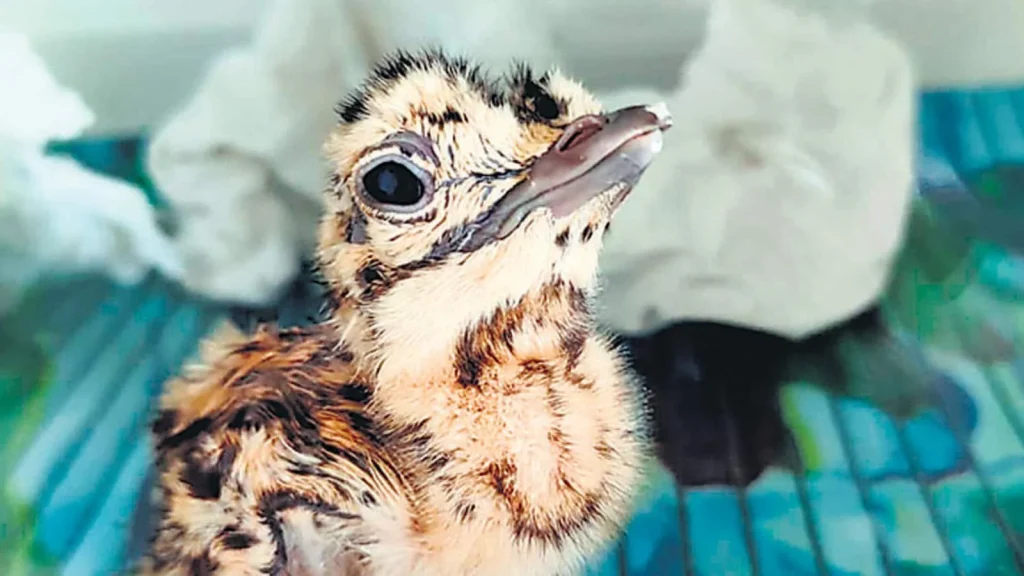Context:
Recently, a chick of the Great Indian Bustard (GIB) was successfully bred through artificial insemination at the Great Indian Bustard Artificial Breeding Center in Jaisalmer.
More on the News

- The chick was born on October 16, making it the first Great Indian Bustard to be hatched through artificial insemination.
- A team from the Wildlife Institute of India (WII) learned this technique from a project in Abu-Dhabi, where they used artificial insemination to breed houbara bustards.
- This effort is part of a captive breeding program that began in 2019, with the goal of eventually releasing these bred GIBs back into the wild.
- However, experts have cautioned that while the artificial insemination technique is promising, it will take at least 25 years to develop a self-sustaining population from captive breeding efforts.
Great Indian Bustard (Godawan)

- GIB is an agro-grassland bird that is native to the Indian subcontinent and is locally known as Godawan in Rajasthan.
- They are recognizable by a black crown on their forehead contrasting with the pale neck and head. The body is brownish and the wings are marked with black, brown and grey.
- Males have a gular pouch that they fill with air to make a humming sound to attract females.
- They have an omnivorous diet, eating grass seeds, insects (like grasshoppers and beetles), and occasionally small rodents and reptiles.
- The GIB typically lays one large egg each year, making them vulnerable to predation. Their nesting habits and declining habitat further complicate their recovery.
- Habitat: Mainly found in Rajasthan and Gujarat, with small populations in Maharashtra, Karnataka, and Andhra Pradesh.
Scientific Name: Ardeotis nigriceps
Conservation Status:
- IUCN red list: Critically Endangered
- Wildlife Protection Act, 1972: Schedule I
- CITES: Appendix I
- It has also been identified as one of the species for the recovery program under the Integrated Development of Wildlife Habitats of the Ministry of Environment and Forests, Government of India.
Current Status of GIB
- Historically, the great Indian bustard was distributed throughout Western India, spanning 11 states, as well as parts of Pakistan.
- Today, its population is confined mostly to Rajasthan and Gujarat, with fewer than 150 individuals remaining in the wild, primarily in Rajasthan.
- Key threats to their survival include habitat loss due to human activities, predation on eggs, and fatalities from overhead power lines.
- A 2020 WII study in the 4,200-sq-km great Indian bustard (GIB) habitat near Rajasthan’s Desert National Park estimated 84,000 bird deaths annually from power lines, including the endangered GIB, which is especially vulnerable due to its narrow frontal vision and large size.
- In response to these challenges, in April 2021, the Supreme Court ordered all power lines in the GIB habitat to be buried underground.
- However, earlier this year, the Supreme Court agreed to review its order after the central government argued that undergrounding power lines over long distances would be “practically impossible.”

